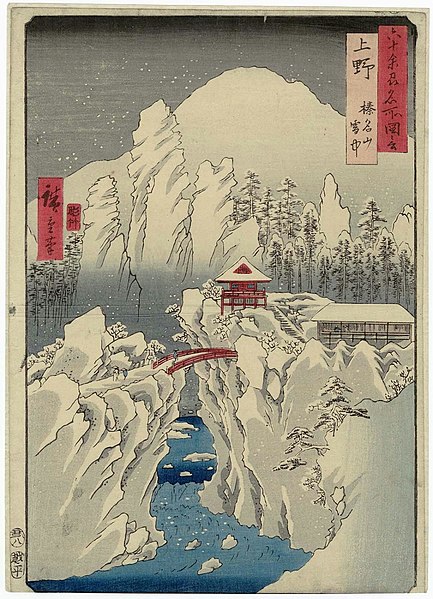
Thammasat University students who are intrigued by the idea of online learning and distance education may wish to explore more opportunities in addition to the class lectures they are currently receiving from their ajarns.
They may be interested to look into massive open online courses (MOOCs) offered by the University of Tokyo, one of Japan’s most prestigious universities. As of 2018, University of Tokyo alumni, faculty members and researchers include sixteen Nobel Prize laureates, three Pritzker Prize laureates, and a Fields Medalist. The Thammasat University Library owns many books published by the University of Tokyo Press.
As the University of Tokyo website explains,
MOOCs are free online courses that anybody can take, and those who complete the course can earn an official certificate for a fee. Top universities around the world offer MOOCs, and the total number of registered learners on the Coursera and edX platforms has reached more than 30 million. Along with self improvement, learners are using MOOCs to improve their professional skills, and the individually validated certificates are helping learners advance in the workplace and make career changes. UTokyo was the first Japanese university to offer MOOCs with two courses on the Coursera platform in September 2013. As of April 2018, UTokyo has 14 courses available (seven via Coursera and seven via edX). More than 370,000 students from over 185 countries have enrolled in these courses.
Among MOOCs currently being offered at the University of Tokyo is Contemporary Japanese Society: What Has Been Happening Behind Demographic Change?
About this course:
The main aim of this course is to give an overview of how contemporary Japanese society has been stratified, from the perspective of changing demographic, familial, and socio-economic structure. Basic statistics will be presented to provide a concrete idea of the changes that have taken place in Japan. By the end of the course, students should have an awareness of similarities and differences across nations regarding social issues including aging population, gender gaps in work and family, and socio-economic inequalities.
What you’ll learn
- Obtain basic knowledge of how various structural aspects of Japanese society have changed or remained unchanged.
- Understand the basic mechanism of social stratification in Japanese society.
- Develop awareness of similarities and differences between the social problems affecting many advanced capitalist societies.
Think actively about how these social problems can be alleviated.
Meet your instructors
Sawako Shirahase
Professor of Sociology
The University of Tokyo
Course period: Offered indefinitely
Another informative offering is
Words Spun Out of Images: Visual and Literary Culture in Nineteenth Century Japan
Course period: Offered indefinitely
Robert Campbell (Emeritus Professor)
In their ambition to capture “real life,” Japanese painters, poets, novelists and photographers of the nineteenth century collaborated in ways seldom explored by their European contemporaries. This course offers learners the chance to encounter and appreciate behavior, moral standards and some of the material conditions surrounding Japanese artists in the nineteenth century, in order to renew our assumptions about what artistic “realism” is and what it meant.
Learners will walk away with a clear understanding of how society and the individual were conceived of and represented in early modern Japan. Unlike contemporary western art forms, which acknowledge their common debt as “sister arts” but remain divided by genre and discourse, Japanese visual and literary culture tended to combine, producing literary texts inspired by visual images, and visual images which would then be inscribed with poems and prose. Noticing and being able to interpret this indivisibility of visual/literary cultures is essential in understanding the social and psychological values embedded within the beauty of Japanese art.

Still another possibility is Sustainability Science – A Key Concept for Future Design
About this course
Sustainability is indispensable for the future of humankind. Sustainability science has emerged as an effort to tackle the complex problems the world is facing today. Lecturers from different disciplines provide a holistic overview of key issues in sustainability including industrial pollution, an aging society, human-nature connection, urban planning, resilience, environmental governance, and education for sustainable development.
In this course, you will learn about historical and current sustainability issues that have emerged around the world, as well as some of the approaches that have been used to solve them. You will be exposed to industrial and water pollution control issues, in addition to challenges caused by an aging and shrinking population.
You will also learn about the human-nature connection and initiatives that aim to create sustainable societies in harmony with nature, based on the concept of Socio-Ecological Production Landscapes and Seascapes (SEPLS). You will explore how ecosystem-based disaster risk reduction (Eco-DRR) approaches can be used to reestablish the human-nature connection through re-naturalization of damaged environments.
This course will also consider an urban planning point of view by exploring the value of an urban-rural land use mixture to create new sustainable societies and resilient megacities.
Finally, you will learn about environmental governance, a crucial element for progress towards a sustainable future. You will be introduced to Education for Sustainable Development (ESD) as a learning method for sustainable development and discuss international debates on ESD.
Japanese perspectives are emphasized throughout the course in the hopes of providing concrete value to solving contemporary sustainability issues.
What you’ll learn
- Historical lessons and current sustainability challenges in Japan and other parts of the world
- International and Japanese initiatives in the field of human-nature connection
- Japanese experience in urban-rural land use mixture
- Frontier knowledge in the area of environmental governance and ESD
- Theoretical concepts of sustainability science
Among the instructors for this free course are Takashi Mino, Dean and Professor, Graduate School of Frontier Sciences, The University of Tokyo; Kazuhiko Takeuchi, Director and Professor, Integrated Research System for Sustainability Science (IR3S), The University of Tokyo; Makoto Yokohari, Professor of the School of Engineering, The University of Tokyo; Masahide Horita, Professor at the Department of International Studies, Graduate School of Frontier Sciences, The University of Tokyo; Yuto Kitamura, Associate Professor of Education, Graduate School of Education, The University of Tokyo, and other distinguished educators.
Another possibility that could be useful for TU students in the Faculty of Public Health and related fields of study is Global Health Policy taught by Kenji Shibuya (Visiting Professor, Department of Global Health Policy, Graduate School of Medicine); Stuart Gilmour (Professor, Graduate School of Public Health, St. Luke’s International University); and Hiroshi Nishiura (Professor, Graduate School of Medicine, Hokkaido University).
Its online description is as follows:
In this course, learners will become familiar with principles and theories of global health problems, and major challenges and controversies in improving global population health as well as practical applications of quantitative methods to analyze and interpret issues and challenges for policy. Topics will include health and foreign policy, health governance, acute disease surveillance, non-communicable diseases, burden of disease, universal health coverage, health systems strengthening, health financing, and human resources for health and ageing.
Four Facets of Contemporary Japanese Architecture: Technology is another highly interesting subject, taught by Kengo Kuma (Professor, Graduate School of Engineering) and Yusuke Obuchi (Associate Professor, Graduate School of Engineering).
Four Facets of Contemporary Japanese Architecture: Theory is described online as the second course of “Four Facets of Contemporary Japanese Architecture” series, with the focus on the second facet: technology.
The technology portion will focus on works by architects who explored the use of technology—from techniques used for traditional crafts to computational processes—as a vehicle for their investigations into the conceptualization and production of architecture. Tadao Ando, Shigeru Ban, Manabu Chiba, Kengo Kuma, Kazuhiko Namba, and Yusuke Obuchi will visit their buildings to discuss the ideas behind their respective works.
What you’ll learn
- Development of contemporary Japanese architecture since the 1964 Tokyo Olympics
- Features of works of influential Japanese architects
- Unique technologies used for contemporary Japanese architecture
- Present concerns and potential future directions for contemporary Japanese architecture
Course period: Offered indefinitely

(All images courtesy of Wikimedia Commons)
